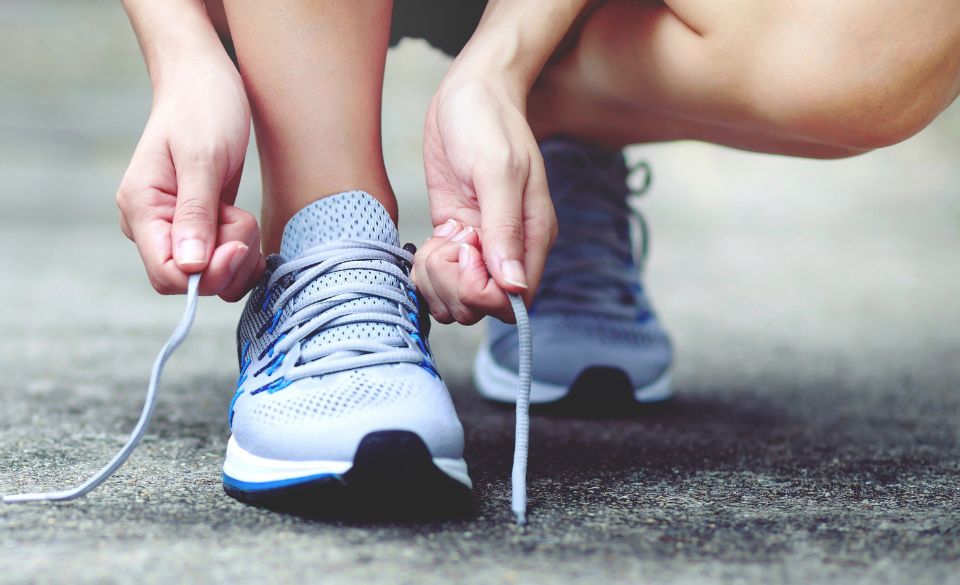
How to Get Faster Over 5k & Average 5km Times
Page Contents
If you’ve ever found yourself curious about the typical 5K race times and how your own performance compares, I’m here to share my knowledge as a seasoned trainer and running coach. Over the years, I’ve guided numerous individuals through their inaugural 5K runs and assisted others in enhancing their speed to achieve more impressive race results. Whether you’re taking your first steps into the world of running or you’re a seasoned road racer, understanding the average 5K race times can provide valuable insights.
In this comprehensive guide, we’ll delve into the average 5K race times categorized by age and gender, while also delivering valuable tips and strategies to help you enhance your 5K performance. So, whether you’re a novice runner or an experienced road warrior, this guide will help you gauge your performance and equip you with the knowledge to excel in the world of 5K races.
What’s the Distance of a 5K Race?
A 5K race covers a distance of 5 kilometers, which is equivalent to 3.1 miles. In the United States, 5K races stand out as the most popular race distance, with an impressive 8.9 million runners participating in these events in 2019. Whether you’re a newcomer to running or making a return to the sport after a hiatus, a 5K race offers an ideal training goal that can be accomplished relatively quickly compared to longer races like the 10K, half marathon, or marathon.
For intermediate and seasoned runners, 5K races present an excellent opportunity to focus on speed improvement and partake in community-based running events. Many 5K races are associated with charitable causes or feature entertaining themes, providing extra motivation for participants. If you’re in search of outstanding races in New York City, be sure to explore our guide to the top running events in the Big Apple.
Average 5K Time Across Age Groups and Genders
If you’re curious about how your 5K time compares to that of other runners, we’ve broken down the average 5K times by age and gender. It’s important to remember that your 5K time is influenced by factors such as your age, fitness level, and gender. In my coaching experience, I often advise against direct comparisons with fellow runners. Instead, view the provided chart as a general reference rather than a means to label yourself as a “good” or “bad” runner. The most effective way to gauge your progress is to evaluate your current time against your past achievements.
In general, the typical 5K time for most runners falls within the 30 to 40-minute range. You can establish a goal 5K time that aligns with your current fitness level, objectives, and age. Our chart illustrates the average 5K times according to age and gender.
While many runners achieve their fastest times in their 20s, as indicated in the chart, it’s evident that improvements often continue well into one’s 30s and even 40s. Your individual time is shaped by your training regimen and conditioning, in addition to your age.
Evaluating Your 5K Time
As a rule of thumb, if your per-mile pace hovers around 8 minutes, you can anticipate completing a 5K in 25 minutes or less, on average. Novice runners typically maintain paces ranging from 9 to 12-minute miles. For beginners, my recommendation is to concentrate on completing your first 5K race, and as you gain more experience in running and racing, you can focus on enhancing your pacing.
Additionally, it’s valuable to consider your splits, which refer to your mile or kilometer times throughout the race. Strive to maintain a consistent pace during your 5K, and if you find yourself with excess energy toward the end, push for a faster finish. An essential skill distance runners develop with practice is the ability to refrain from starting too quickly, as this can lead to an early depletion of energy, resulting in slower final miles compared to the initial ones.
Benchmark Runs
A practical approach to assess your 5K pace involves conducting benchmark runs at regular intervals. You can time yourself by running a 5K once a month to gauge the progress of your training and pacing. If you’re a beginner, starting with 1-mile benchmark runs may be an ideal way to gradually work up to completing full 5K runs.
How to Boost Your 5K Speed
If your goal is to run faster than the average 5K time or surpass your personal record, here are some tips to help you become a speedier runner:
1. Incorporate Speed Workouts: After approximately six weeks of consistent running, beginners can introduce speed training into their regimen. Intermediate and advanced runners can commence speed training at any point. Speed workouts, such as interval training and tempo runs, can contribute to improved speed.
2. Follow a Training Plan Embracing Progressive Overload: Implement a training plan that adheres to the principles of progressive overload. This approach entails gradually increasing your mileage or workout intensity by no more than 10 percent from one week to the next. Progressive overload facilitates fitness improvement while reducing the risk of injury.
Interval Speed Workout
Here’s a sample interval workout designed to enhance your 5K running pace:
1. Warm-up: Begin with an 800-meter (1/2 mile) relaxed-paced run to prepare your body. Incorporate dynamic stretches to loosen up.
2. Next, sprint 400 meters (1/4 mile, equivalent to one lap on a standard outdoor track) at an 80 percent effort level.
3. For active recovery, follow up with a slow-paced 400-meter jog.
4. Repeat this sequence to complete a total of 6 fast laps, interspersed with 6 slow laps.
5. Cool down: Wind down with an 800-meter relaxed-paced run, and make sure to engage in stretching exercises for flexibility.
Tempo Run Speed Workout
A tempo run is an effective method to boost your running speed for races by challenging your body to sustain a steady-state effort at a faster pace than your usual running speed. Here’s a tempo run workout tailored to help you achieve a quicker average 5K time:
1. Warm-up: Initiate your session with a leisurely 1-mile run at a slow, relaxed pace. Incorporate dynamic stretches to prepare your body.
2. Tempo Run: Transition into a challenging pace for the next 2 miles, maintaining a 70 to 80 percent effort level. Your goal is to hit a pace equivalent to your 10K race pace or one that you could comfortably sustain for up to an hour. It should feel comfortably hard.
3. Cooldown: Conclude your workout with a 1-mile jog at a relaxed, slow pace. Follow up with stretching exercises to aid in recovery.
Incorporate one to two speed workouts into your 5K training program every week to boost your speed. It’s essential to schedule these speed workouts between your easier training days or rest days to allow for at least a day of recovery following each intense session. Consistency in your speed training program will yield faster race paces and improved 5K times in just a few months.
Final Words – How to Get Faster Over 5k & Average 5km Times
In conclusion, whether you’re a seasoned runner or just beginning your journey, understanding the world of 5K races and the average times can be both motivating and enlightening. With the insights provided in this article, you can gain a valuable perspective on how your performance stacks up against others.
The 5K race, at a distance of 5 kilometers or 3.1 miles, is a popular choice for runners in the United States, making it an achievable goal for those new to the sport or looking for a quick training target.
We’ve explored average 5K times across different age groups and genders, emphasizing that your journey is unique, shaped by factors like age, fitness level, and training. While the typical 5K time for most runners falls between 30 and 40 minutes, the key is to set goals that match your individual circumstances.
Evaluating your 5K time involves assessing your pace, understanding your splits, and conducting benchmark runs to track your progress. The goal is not to compare yourself with others but to measure your advancement against your own past achievements.
For those striving to run faster 5Ks, we’ve provided valuable tips, including incorporating speed workouts and following a training plan with the principles of progressive overload.
Additionally, we’ve offered sample interval and tempo speed workouts, which can be instrumental in boosting your 5K performance. Remember to schedule these workouts effectively within your training program for optimal results.
Incorporating these strategies and insights into your running routine can lead to improved race times, personal records, and an overall greater sense of accomplishment in your 5K pursuits. Keep running, stay committed, and enjoy the journey of self-improvement in the world of 5K races!



